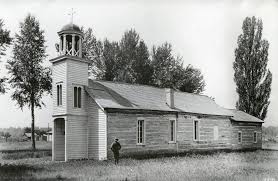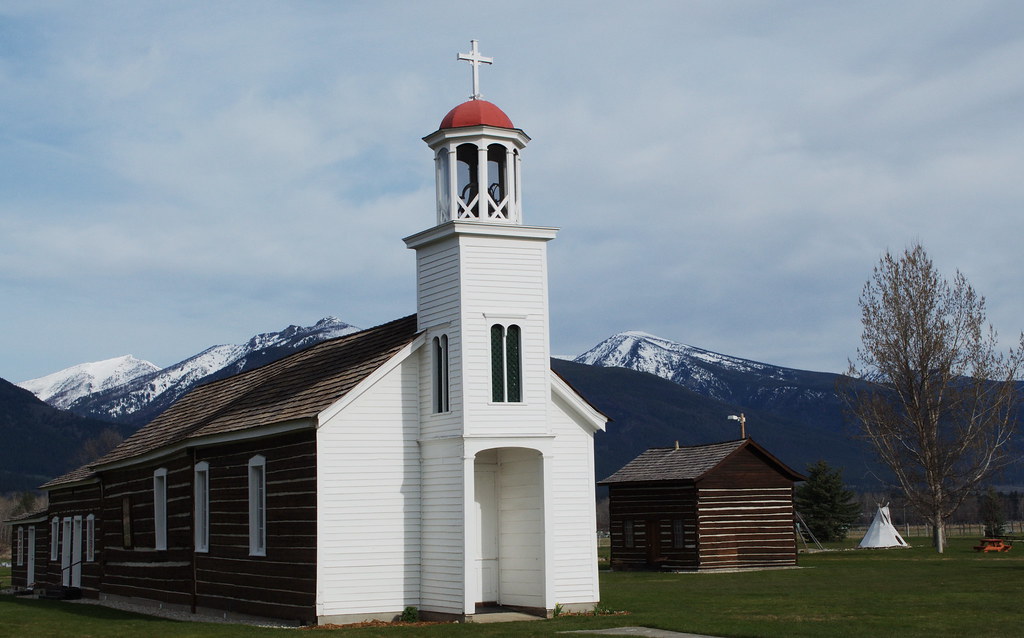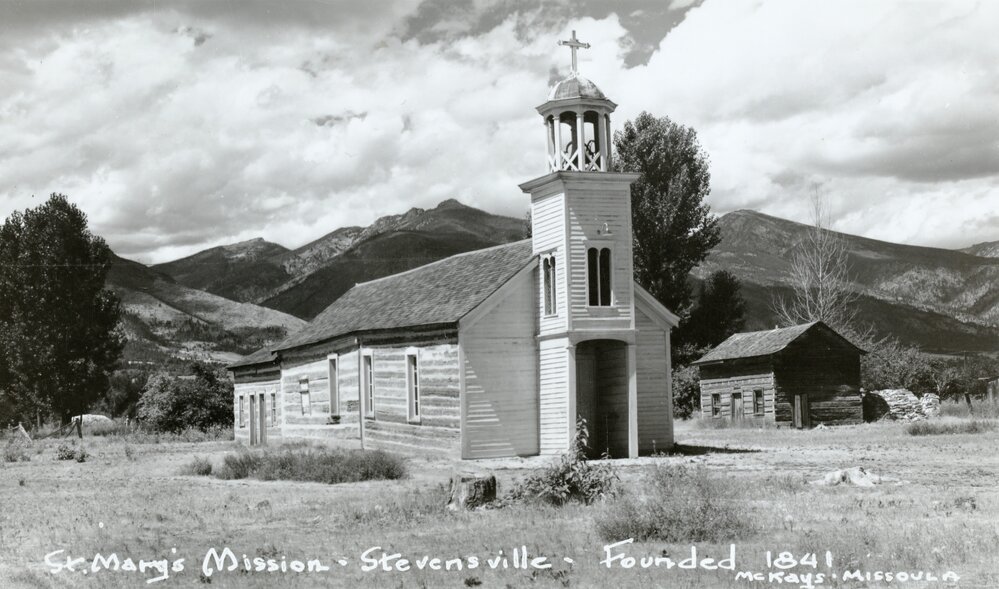Historic St. Mary’s Mission: The Birthplace of Montana
St. Mary’s Mission, a significant landmark in Stevensville, Montana, has played an instrumental role in shaping the state’s history. Founded in 1841, this mission stands as the first non-indigenous settlement in Montana. Its vibrant past is rich with tales of cultural assimilation, conflict, and resilience that shaped the American Frontier.
Beginnings: The Establishment of St. Mary’s Mission
The genesis of the St. Mary’s Mission can be traced back to the Society of Jesus, a religious order of the Catholic Church. The mission was designed to cater to Catholic Salish Indians, marking the start of a unique cultural amalgamation. In 1866, the mission was rebuilt and in 1970, it earned its place on the National Register of Historic Places.

The Search for the ‘Black Robes’
The Salish people came to know about the Jesuits through the Catholic Iroquois fur trappers. Ignace (Big Ignace) particularly piqued their interest with tales of the ‘Black Robes.’ His stories prompted the Salish to send delegations to St. Louis in 1831 and 1835, requesting a priest to accompany them back to the Salish country.
Arrival of Father De Smet
Despite the unsuccessful attempts, hope arrived in the form of Father De Smet, a Jesuit missionary. In July 1840, he was welcomed by an assembly of over a thousand Salish and Pend d’Oreille Indians. A year later, Father De Smet returned with a group of religious men to establish the mission in the Bitterroot Valley.
Building the Mission: A Testament to Community Effort
The construction of St. Mary’s Mission was a community effort led by Brother Claessens, a skilled carpenter. The Salish women and men actively participated, working tirelessly to build a log church that could hold up to 900 people. The interior of the church was adorned with mats and festoons created from local natural resources.
A Village with a Plan
Nicolas Point, one of the Jesuits, proposed a plan for houses with lawns. Despite the potential risk of attacks, the plan was implemented, creating a harmonious village environment. A palisade was erected to protect the church. The first communion was held at Easter 1842, marking a significant milestone in the mission’s journey.
Arrival of Father Anthony Ravalli
In 1845, Father Anthony Ravalli joined the mission. His contributions included inoculating the Indians against smallpox and running a dispensary. The mission’s agricultural yield was impressive, producing 7,000 bushels of wheat and a substantial amount of garden crops in 1846.
Changing Times: The Closure and Destruction of the Mission
Despite the prosperity, the mission faced challenges. The Salish Indians felt disillusioned by the establishment of a mission at Colville for the Blackfeet, their adversaries. This led to a drift away from the mission and a return to their previous lifestyle. Raids by the Blackfeet Indians led to the mission’s closure in 1850 and the subsequent burning down of the church.

New Beginnings: Reestablishment of the Mission
Sixteen years later, in 1866, St. Mary’s Mission was reestablished a mile south of its original location. The Catholic Salish attended sermons in the new church, and over time, settlers in the area also began to attend.
Expansion and Changes
The church underwent expansion in 1879, catering to the growing congregation. However, in October 1891, the Bitterroot Salish were moved to the Jocko Reservation, marking the end of St. Mary’s as an Indian mission. In 1921, the church became St. Mary’s Parish, and in 1953, work began on a new chapel.
Restoration and Additions
The historic St. Mary’s chapel underwent restorations in the 1970s and 80s. In 1996, a visitor center and museum were added, enhancing the historical significance of the place. The St. Mary’s Mission Historic District was added to the National Register of Historic Places in 2010.
St. Mary’s Mission Today: A Peek into the Past
Today, the mission complex is open for tours from April through October. Visitors can explore the chapel, residence, infirmary, dovecote, a cabin with Salish artifacts, and a visitor’s center that houses a museum, research library, art gallery, and a gift shop. The mission continues to captivate visitors with its intriguing history and the remarkable stories it holds.
St. Mary’s Mission serves as a poignant reminder of the cultural assimilation and conflicts that unfolded in the backdrop of the American Frontier. The mission’s tale is a significant chapter in America’s past, offering insights into the turbulent times that eventually gave shape to present-day Montana.
